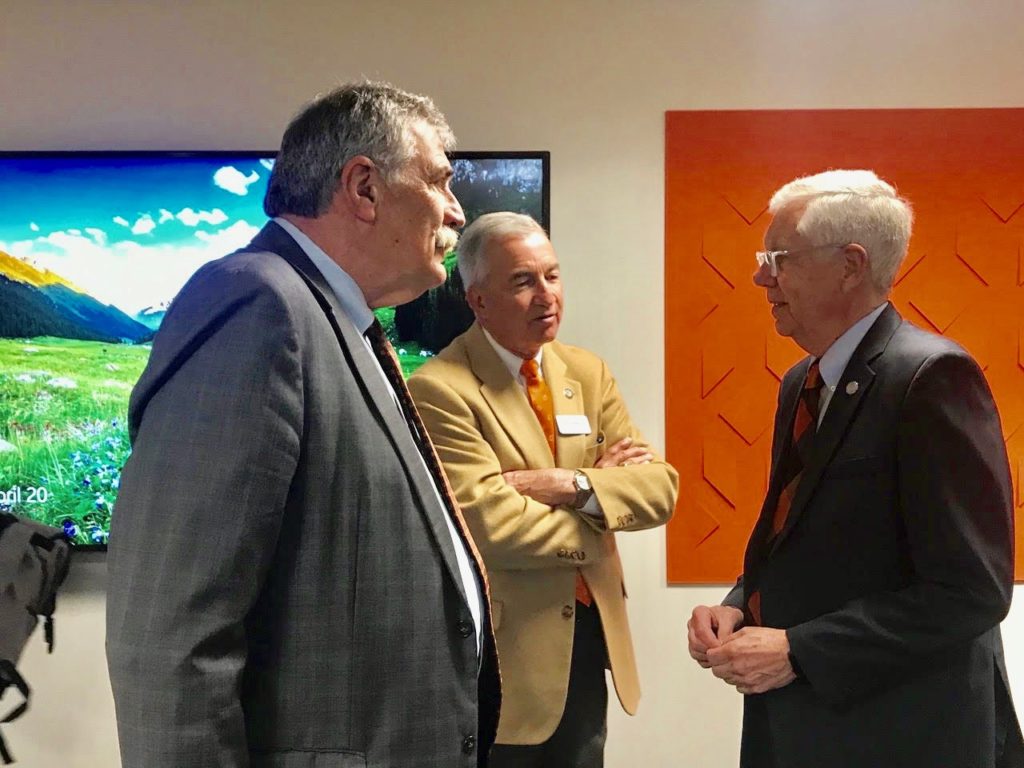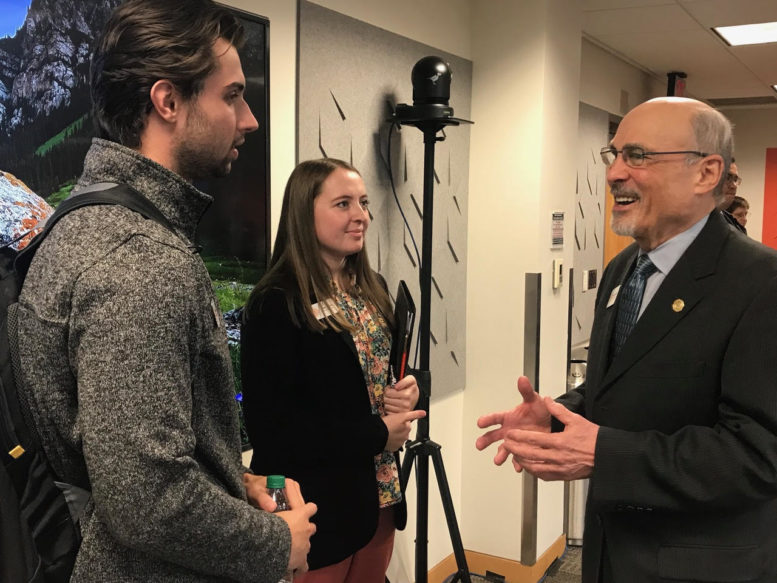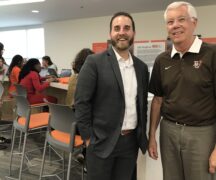By DAVID DUPONT
BG Independent News
Bowling Green State University’s Life Design initiative has gotten a “transformational” boost. The university has announced $13.5 million in gifts to create the Michael and Sara Kuhlin Hub for Career Design and Connections and the Geoffrey H. Radbill Center for College and Life Design.
The university Board of Trustees convened in special session today (April 20) to approve the naming of the center and hub.
Life Design, which was launched in 2020, focuses on fostering students understanding how their college education helps them achieve success in life and careers. Once fully implemented each incoming student will be assigned a life design coach and will take a foundational course BGSU 1910 taught by that coach.
[RELATED: BGSU introduces Life Design to help students map out their futures]
“We must offer more than a degree. We need to insure that our students are successful in college and their careers and in life,” President Rodney Rogers said. “It’s the sum of what we do.”
Rogers said that life design will also help BGSU “to more fully leverage” its more than 192,000 alumni and the companies and organizations that it partners with.
These gifts, he said, “are the stakes in the ground as BGSU writes the next chapter in our unique and innovative approach to higher education.”

Kuhlin, the namesake of the Michael and Sara Kuhlin Center, is the current immediate past chair of BGSU Foundation Board of Directors, on which he’s served since 2006.
Radbill, a resident of New York, has been a national trustee of the board since 2018.
Both are 1968 graduates of BGSU.
“When I think about life design,” Kuhlin said, “it’s not only about transforming the way we prepare students for success, it’s also a bold and innovative way of keeping the university relevant. And that to me is really critical.”
He cited a number of national brands that have failed because they were no longer relevant to consumer needs. Higher education, even public higher education, is not immune to this kind of failure.
The Radbill Center will focus on helping to guide students in their first two years, helping them decide “what do I want to do when I grow up,” he said.
The Kuhlin Hub will focus on helping juniors and seniors launch their careers with “personal advice and coaching and targeted career advice and placement,” Kuhlin said.
The hub will provide the tools, expertise, and connections to every graduate to get their first job or enroll graduate school. He said having 100 percent of graduates achieve that is a possibility with life design.
Kuhlin said life design will help the university to enroll, retain, and graduate students.
Those factors are the key to the university’s financial health.
He urged the university to “market the hell out of life design” in order to reach prospective students and parents “in ways that they will understand the relevance and importance of this. The message should be bold in promoting life design as a path to student success that’s offered nowhere else but here and it provides a tangible return on investment for a college education.”
Radbill said he first learned of a life design during a meeting with Rogers and Vice President for University Advancement Pam Conlin to discuss what he could do to benefit the university.
He was impressed by Rogers’ vision and passion for the new approach. Rogers “infected” Radbill with “the life design bug,” the trustee said. “Fortunately there was no vaccination.”
He want home and discussed it with his life partner Jan Kohn. He credited her with doing extensive research about life design, which was born at Stanford University in California.
The more they learned about how life design could help shape global citizens, the more committed they became in helping support it at BGSU.
Radbill said at his stage in life he’s hesitant to engage in anything transformational, but he was sold on life design.
Life design is separate from the university’s academic advising system.
Advising, Provost Joe Whitehead said, helps students select the courses they need to take and understand policies they need to follow as they move toward graduation.
Life design looks beyond the classroom and courses, he said, to a more holistic approach, “a framework of how you measure out your trajectory through life.”





